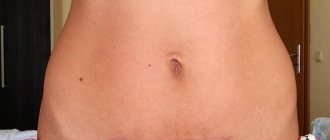The first feeding, whether immediately after childbirth or a few days later, is needed more to stimulate the body to produce milk. Motherhood is a feat, because its task is to bring a new life into this world. The process of bringing a child into the world can be not only physiological; for some reason, childbirth is resolved surgically. The choice of this method can be planned or sudden, for example, due to acute fetal hypoxia. However, there is one constant thing, regardless of the type of birth: mother's milk is the universal and healthiest food for a newborn.
Is it possible to breastfeed after a cesarean section?
Unfortunately, most maternity hospitals do not practice early breastfeeding after surgical delivery. Although, if general anesthesia was not used, the child can be applied to the nipple already in the operating room. In other cases, the postpartum mother is admitted to the intensive care unit, where she recovers from anesthesia, and the baby is sent to the neonatal unit, where he is fed formula from a bottle. Usually they can occur only a day after a cesarean section, at which time the first breastfeeding occurs.
Try to feed your baby on demand, about 8-12 times a day
It happens that colostrum - the first milk - does not arrive in the mammary glands immediately, especially with a planned cesarean section, but on the 3rd - 4th day, because during such births the necessary hormonal levels in the body do not immediately turn on. On the 6th day, mature milk is formed. If there is enough of it, bottle feeding will not be required. The baby should always be offered the breast before complementary feeding, and if necessary, water should be given between feedings (about half an hour after milk or formula).
Can surgery interfere with breastfeeding?

Many women are concerned about the question of whether it is possible to breastfeed their baby after a cesarean section. The belief that such births are an obstacle to breastfeeding is widespread. However, this is a myth that dates back to the times when little attention was paid in the hospital to maintaining breastfeeding after surgical delivery.
Childbirth is not the beginning of lactation, but an incentive to intensify it. Milk production begins as early as the 16th week of pregnancy. Regardless of how the birth took place, the removal of the placenta from the uterus is a signal for the brain to begin secreting large amounts of prolactin, which is responsible for increasing lactation. Frequent latching of the baby to the breast is required, which will regularly stimulate the secretion of prolactin and oxytocin.
Without the help of medical personnel, a woman after surgery really has little chance of successful breastfeeding. In addition, if general anesthesia is used during surgery, the patient takes a long time to regain consciousness, and the child has a weakened sucking reflex if he is not applied to the breast on the first day.
Today, most planned procedures are performed using spinal anesthesia, during which the woman remains conscious. Therefore, the first contact with the baby, which is extremely important for feeding, can be made soon after birth.
It is important that a woman does not allow herself to be convinced that breastfeeding after a caesarean section will be impossible for her. You cannot succumb to the psychological pressure of others. Experienced midwives say that if a woman decides that she will feed her baby naturally, then nothing and no one will stop her.
Positions for feeding newborns with breast milk after cesarean section
The best positions for breastfeeding after a cesarean section are lying on your side on the side of the nipple that will be used. The child lies on his back or semi-sideways. His head is at the shoulder of his mother, who hugs him with the same arm. Children usually find the nipple well on their own if they are calm. You can help them by opening your mouth slightly, and to improve lactation during feeding, pinch a good fold on the mammary gland with your free hand.
It is also possible to feed while sitting on the bed - for comfort, you can put a pillow under the baby. You need to ensure that the nipple is captured along with part of the areola and pay attention to the position of the lower lip, it must be completely turned out!
It is important not to strain the muscles of the back and neck - after surgery, the tone in them can usually be increased, plus sleepless nights... Moreover, with such a birth, if the outcome is favorable, you will have to be observed in the postpartum ward for about a week. Lying on your stomach will be possible for about a month after a cesarean section, so position options are limited.
Additional recommendations for mothers:
- Wash your breasts with warm water before each feeding
- Use special pads and change underwear daily
- Apply ointment to prevent cracked and irritated nipples
- Periodically arrange air baths for the chest
- Change bracelets on the wrists of the right or left hand in order to remember the feeding side
Special postpartum underwear should provide good support for the lateral, lower lobes of the mammary glands, since they are the ones that work the most. To maintain the muscle corset and reduce pain in the cut abdominal muscles, a postpartum bandage will be useful. The correct feeding regimen (no more than half an hour at a time) and hygiene guarantee the absence of such painful consequences as cracked nipples, lactostasis and mastitis.
Separation from mother.
Most maternity hospitals use the practice that the mother spends the first 24 hours after a caesarean section in the intensive care unit. If the mother has the opportunity to ask the baby to be next to her, this is, of course, better. Keep in mind that the practice of delaying the start of feeding during a cesarean section leads to the fact that the mother’s milk comes later - just about a day than if the mother immediately breastfed her baby.
After a cesarean section, the mother is usually prescribed antibiotics. If the operation went without complications, then antibiotics compatible with breastfeeding are selected, and the mother can feed her baby. There is no need to be afraid: the antibiotics used in such prescriptions either do not get into the milk at all, or get into microscopic quantities, having virtually no effect on the baby.
Unfortunately, in some cases, the specific features of a cesarean section require the prescription of serious antibiotics, during which doctors prohibit breastfeeding. Usually this is the first three to four days of the baby’s life. The greatest danger that awaits the mother during this period is not to take into account that to maintain lactation in the absence of feeding the baby, regular pumping is needed.
After all, milk is produced precisely in response to stimulation of the breast, so if there is no sucking of the baby and no pumping, milk production will also be difficult! And although usually milk still comes in such cases, this may already be the seventh to tenth day of the baby’s life. And very often it turns out that when on the fourth or fifth day the mother is asked to put the baby to the breast for the first feeding, he tries to take the mother’s breast, but not only does he not cope with this after feeding from a bottle nipple, but the breast turns out to be almost empty. The baby already needs mother’s milk in significant volumes, but it’s not there!..
To avoid such a sad situation, you must definitely express milk if you cannot feed your baby. Clinical electric breast pumps help very well with this. Ask the medical staff about them! A combination of manual expression and expression with a clinical breast pump works best for milk production in the first few days.
We suggest you familiarize yourself with How to prepare vegetable puree for the first feeding: recipes and feeding

It is best to start 6 hours after birth, in extreme cases - if the mother feels completely exhausted - a day after birth. You need to express each breast for 10 minutes every three hours, with the exception of the night break. This must be done even if nothing is secreted from the breast at all - after all, the purpose of such pumping is not to get milk, but to give a signal to the body that it needs to actively begin producing it.
Nutrition after caesarean section for a nursing mother
During the 24-hour stay in the postpartum department, a strict diet is observed, provided for by the hospital conditions; women are offered specialized protein nutrition. Subsequently, recommendations are given - each mother is given a list of foods that are not allowed. Alas, after reading such lists, the young mother will be surprised and ask: “What is possible then?”

In the first days after childbirth, there is no need to worry that during the formation of colostrum you do not have enough vitamins, since you receive all the substances intravenously, so try to drink more than load your tired body with food
Authorized products:
- Boiled lean meat, chicken, turkey
- Porridge
- Whole wheat bread
- Seeds, nuts (although they do not increase lactation)
- Low-fat cottage cheese, yogurt without additives
- Water without gas
- Compotes without dried apricots
- Marshmallows (in moderation)
- Beet
- Beef liver
The rest of the gastronomy is introduced into the diet carefully, checking the baby’s reaction within 24 hours after feeding. If everything is fine, then the range of dishes can be expanded, but still be careful with allergenic foods (citrus fruits, seafood, honey) and those that tend to cause gas formation (kefir, legumes, cabbage). You can have no more than a glass of whole milk per day, and it is better to add a small amount to the porridge at the very end of cooking.
Newborn lethargy
The first time after a cesarean section, children are lethargic, sleepy, inactive, and are not interested in the breast. This occurs due to prolonged exposure to strong medications. If the baby is premature, then sucking becomes too difficult for him.
Don't be afraid of these first difficulties. Mothers also face them after natural childbirth.
What to do to stimulate your baby's interest in the breast:
- Spend more time on physical contact, be skin to skin with him: lay him next to you, carry him in your arms, etc. This will allow him to adapt to new conditions, awaken his instincts and reflexes, and after a while he will be strong enough to take the breast.
- Put your baby to the breast not only on schedule, but also during the rest period. A calm baby is more inclined to learn how to breastfeed correctly. More frequent feedings contribute to faster learning for mother and baby: the woman learns to attach the baby and control it, and the baby gets used to taking the nipple and areola, holding them in the mouth and extracting milk.
- To stimulate the newborn's interest in the breast, it is recommended to squeeze a few drops of colostrum into the baby's mouth or lips.
- If the baby is still weak, you can feed him with a spoon or syringe without a needle. It is important that it is an object that prevents sucking. Otherwise, the child will develop an incorrect motor stereotype; it will be difficult for him to take the breast and “relearn” to use it.
We suggest you familiarize yourself with What you can eat after a cesarean section: nutrition in the first days in the hospital, the diet of a nursing mother after surgery
While the baby is not able to empty the breast well, the mother will have to establish lactation on her own: express every few hours manually or using a breast pump.
What to do if there is little milk after cesarean
First of all, there is no need to despair: the main thing is to put the baby to the breast more often, and always at the first request, namely 8-12 times a day. Feeding is also possible when the child is sleeping. The milk may not come right away. It happens that the situation returns to normal only a month after a cesarean section. Be sure to maintain a water regime; it is useful to drink more berry infusions.
If you are not sure. that the breastfeeding process is happening correctly, you can seek a free consultation at the maternity hospital or clinic
In addition, the psychological state of the mother affects breastfeeding in general. Mood, nervousness - all this is transmitted to the child through mother's milk, so before feeding, you need to calm down yourself and calm the baby. In difficult situations, you can contact a lactation consultant for free, who work in maternity hospitals and clinics. If your own milk is still not enough, there is always the possibility of additional nutrition with infant formula, but you just need to remember that in this case the child needs to be given additional water.
How to breastfeed your baby correctly
It is quite important to understand how a baby should latch on to the breast. The saturation of the baby, as well as the health of the mother's breast, depends on the correct latching of the nipple. After all, if the nipple is grasped incorrectly, the nipple will be injured and cracks may occur - this will undoubtedly harm the lactation process.
The baby should clasp the nipple and areola wide with his lips, with the nose and cheeks touching the breast, and the lips should be turned outward. If everything is done correctly, the baby will suck and swallow rhythmically and get a sufficient amount of milk.
MORE ABOUT: Flemoxin solutab for angina dosage in adults
The most important task for mothers who have had a surgical birth is to understand and learn that obstetric surgery and lactation after cesarean are absolutely compatible things. Do not be afraid to establish breastfeeding, because this is very important for the baby. And if you follow all the recommendations, the advice of doctors and the patience of the nursing mother, very soon the child will receive not only complete, irreplaceable nutrition, but also close emotional and tactile contact with the mother, which is possible only with such special communication as breastfeeding.











